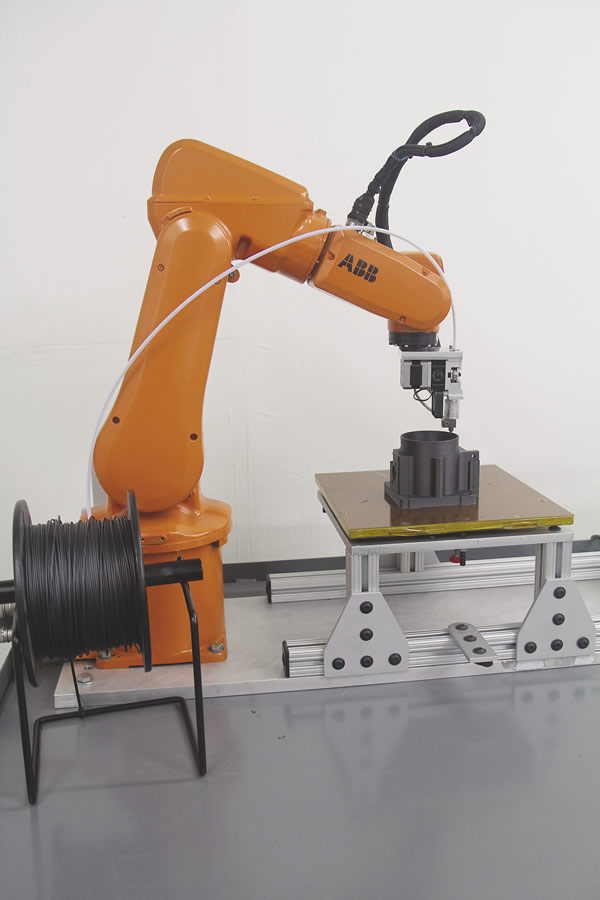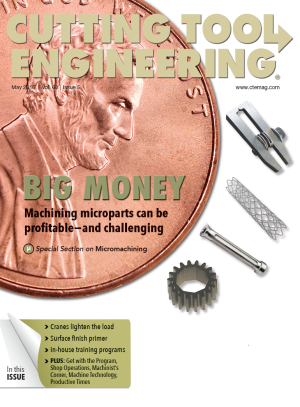Arevo Labs hopes its new RAMP leads to better 3D-printed componets for the defense and aerospace industries.
Arevo touts RAMP (Robot-based Additive Manufacturing Platform) as the first system of its kind optimized for 3D printing of composite thermoplastic parts. The system includes a 6-axis robot arm and end-effector hardware for deposition. RAMP can accommodate build envelopes from 1,000 cu. mm to 8 cu. m, depending on the size of the robot used. The end effector consists of a deposition head with special thermal management technology for processing carbon-fiber-reinforced thermoplastics.


RAMP prints in three dimensions rather than two. Image courtesy Arevo Labs.

RAMP’s CAM software converts CAD models into a set of deposition instructions for the robot. In addition, the software suite includes a kinematics simulator that interprets complex deposition instructions and optimizes part-construction paths.
RAMP’s multiple-axis toolpaths give it a dimension that competitive 3D printers lack, according to Hemant Bheda, Arevo’s CEO and cofounder. Previously, Bheda explained, all 3D printing has been done in the Cartesian (X-Y) plane, with one flat layer deposited on top of another. But RAMP does what Bheda described as “true” 3D printing, which means printing 3D contoured surfaces rather than flat layers.
This is important for a couple of reasons. For one, Bheda noted true 3D printing strengthens parts by eliminating the possibility that forces in the Z-axis direction will cause stacked, printed layers to delaminate. With the RAMP process, “you have continuity across Z, while in other cases you would not,” he said.
In addition, Bheda pointed out that RAMP’s brand of 3D printing improves part aesthetics by eliminating the visible striations, or “stair stepping,” that result from stacking flat, printed layers on top of each other.
RAMP is also designed to accommodate secondary processes. For example, some machining is required to remove additive-manufacturing support material once a 3D printing process has concluded. At that point, Bheda said, a toolchanger can be used to make the switch from a deposition tool to one that allows the system to do the necessary machining.
For more information about Arevo Labs, Santa Clara, Calif., visit www.arevolabs.com or call (408) 780-3993.
Related Glossary Terms
- computer-aided design ( CAD)
computer-aided design ( CAD)
Product-design functions performed with the help of computers and special software.
- computer-aided manufacturing ( CAM)
computer-aided manufacturing ( CAM)
Use of computers to control machining and manufacturing processes.
- flat ( screw flat)
flat ( screw flat)
Flat surface machined into the shank of a cutting tool for enhanced holding of the tool.
- toolchanger
toolchanger
Carriage or drum attached to a machining center that holds tools until needed; when a tool is needed, the toolchanger inserts the tool into the machine spindle. See automatic toolchanger.


